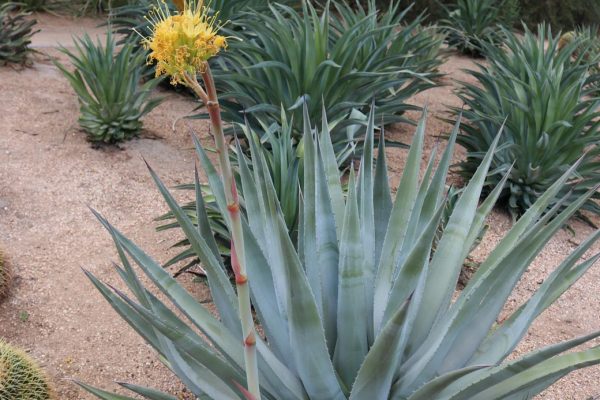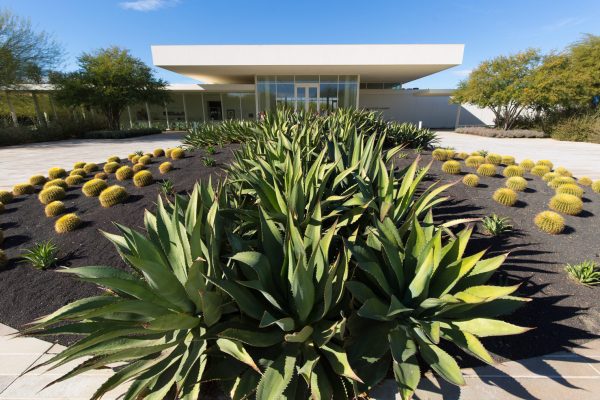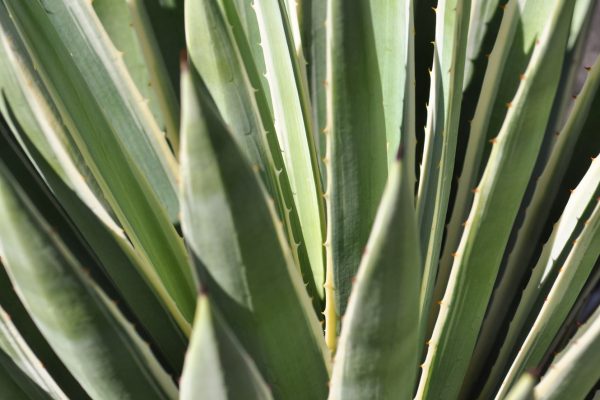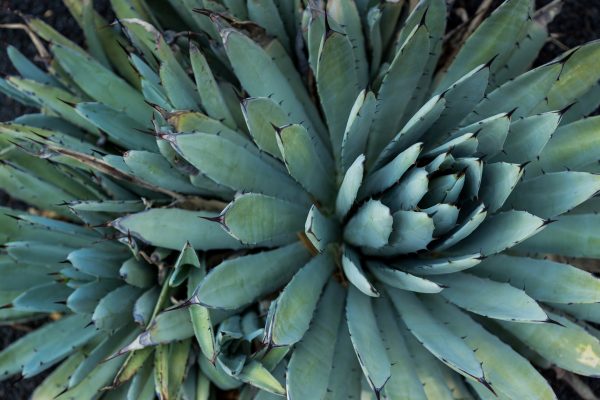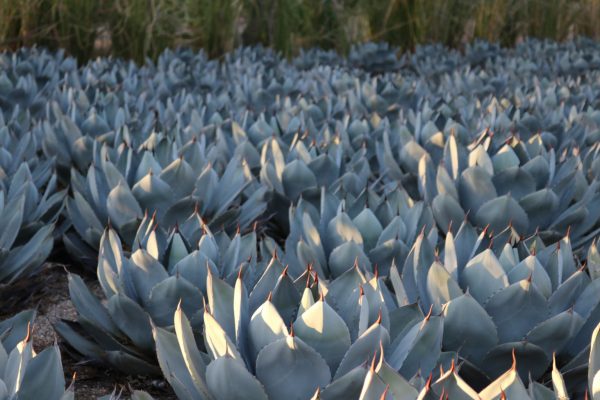The Desert Agave is a medium-sized agave with upright, rigid leaves ending in a strong terminal spine at its tip. It can be found in the lower gardens south of the entry drive, or to the right of the drive if you are standing with your back to the Center.
A local desert native, it is planted throughout the gardens as part of the original landscape design. Gradually rising temperatures in the desert, along with a reduction of winter chills lasting long enough to keep pests at bay, resulted in the struggle of some plants in the first few years. After becoming established, the current Desert Agave specimens are doing well, with some having completed their bloom.
The inflorescence (flowering stalk) can reach up to 13 feet with bright yellow blooms, but this occurs at end of life usually between 15 and 20 years of age, and the plant will die shortly thereafter, leaving the next cross-pollinated generation to move forward.

In front of the Center, in the middle of the motor court, is a medallion-shaped bed where specimens of Cowhorn Agave are arranged among Golden Barrel cactus in a black scoria (lava stone) mulch. The margins of the Cowhorn’s leaves display reddish-brown teeth in a dimorphic (two-style) growth pattern. The teeth are both straight and curved, which results in a “snaggle-toothed” appearance. This is a contrast to some other agaves, which have a somewhat more uniform margin. Cowhorn is also found along the entry drive near the Bob Hope gate, but safe, close-up viewing is best done at the motor court.
This native of Mexico grows wild within an elevation range of 3,000 to 6,000 feet. Cowhorn Agave has not yet bloomed at Sunnylands. It will bloom only once, at end of life—usually between 12 to 18 years. The spike can reach over 20 feet, displaying greenish-yellow flowers.
This species does very well on the desert floor. Though it is more likely to be harmed by frost, it can be light sensitive during high-summer heat.

The variety of Caribbean Agave at Sunnylands is ‘marginata,’ and its name refers to the striped margins of its leaf edge. It is in the specimen beds closest to the solar field. Late in life, it will begin to grow a stem that raises a rosette of leaves off the ground. Often this happens right before the plant blooms.
When it does bloom, this final act will require all of the energy it has been storing during its life. It will send up a 16-foot branched stalk that will bloom and then set bulbils (small, fully formed plants). These can be collected and propagated. If left alone, they will tumble down to root around the parent or blow off to bloom elsewhere and begin a new colony. Earlier during its life, it will also have grown offsets or clones that can replanted. In the wild, it may form a colony of these cloned versions of the parent plant. It is possible that the parent plant will be long gone from older colonies.
This is a native of northern Mexico, but it has an extensive range with varieties as far south as Costa Rica.

This geometric wonder plant grows in complete contrast to the urn-like or the tight rosette structure of some other agave. It’s identifiable by its rigid, straight, and linear leaves that radiate from its heart, like a starburst. This stand-out agave is easiest to find in beds to the south of the Great Lawn. The black-spined leaf margins give it its common name. Everything about its perfectly balanced structure evokes symmetry, but with energy.
Though it has not bloomed at Sunnylands, it will—like other agave—bloom once at end of life. A 6-foot branching stalk will produce green flowers with a slight tinge of purple. It will set multiple bulbils, which are small, fully formed plants that will grow on the branching stalk. These will tumble to the ground to root and grow as a new plant. Black-spined Agave can be propagated by seeds, bulbils, or clones, which can be removed and planted.
A native of Mexico, but restricted to the state of Oaxaca and the city of Tehuacán in the Mexican state of Puebla.
One of our most popular plants at Sunnylands is the truncated variant of Parry’s Agave. When visitors hear its common name is Artichoke Agave, the response is an instant head nod and verbal agreement—of course! It displays a tight, perfectly round rosette that is reminiscent of an artichoke bloom. Its arrangement in uniformed rows at Sunnylands draws the eye to its oval, blue-green leaves.
Like other parryi varieties, Artichoke Agave is versatile in garden design, pairing gracefully among wildflowers and perennials, or stealing the show in groupings. It adapts well to both desert floor and hillside gardens, making it a great choice for any space.
